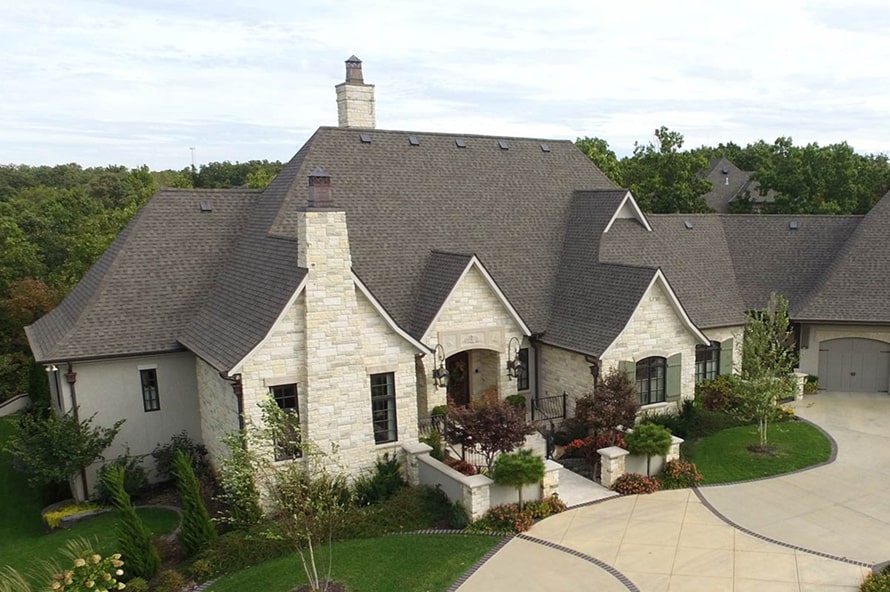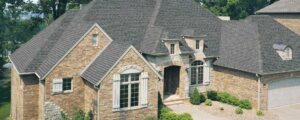Why Wisconsin Roofing Needs Energy-Efficient Roofing
A roof is one of the most critical components of a home’s energy efficiency. In Wisconsin, where homes endure freezing winters and humid summers, an energy-efficient roof is essential. Investing in an energy-efficient roofing system helps regulate indoor temperatures, reduce utility bills, and protect your home from seasonal damage. Not only does it help in reducing energy costs, but it also ensures compliance with state building regulations.
Wisconsin’s Chapter SPS 322: Energy Conservation
Wisconsin follows SPS 322: Energy Conservation, which sets regulations for residential roofing. These guidelines ensure specific roofing standards must be met to enhance energy efficiency:
- Efficient energy use to reduce heating and cooling expenses.
- Protection against excessive heat loss in winter and overheating in summer.
- Sustainable building practices that lower carbon footprints.
How an Energy-Efficient Roof Benefits Wisconsin Homeowners
A well-installed, energy-efficient roof provides numerous advantages like the ones listed below.
- Lower Energy Bills – Reduced heating and cooling costs throughout the year.
- Improved Indoor Comfort – Consistent indoor temperatures without excessive HVAC use.
- Enhanced Durability – Longer-lasting roofing materials withstand Wisconsin’s severe weather.
- Eco-Friendly Benefits – Reduced energy consumption lowers environmental impact.
Best Energy-Efficient Roofing Materials for Wisconsin
Choosing the right roofing materials is essential for improving energy efficiency and reducing heating and cooling costs. Top options include:
- Asphalt Shingles – A cost-effective and widely used option that provides moderate insulation and reflects some sunlight to help regulate indoor temperatures.
- Metal Roofing – Highly durable with reflective properties that lower heat retention and resist ice dams.
- Cedar Wood Roofing – Offers natural insulation, retains heat in winter, and allows airflow for moisture control, making it an eco-friendly option.
Choosing energy-efficient materials helps homeowners maintain comfortable indoor temperatures, lower energy bills, and extend roof lifespan while withstanding Wisconsin’s extreme weather conditions.
Wisconsin Roofing Insulation & Ventilation Standards
To comply with SPS 322: Energy Conservation, Wisconsin roofing systems must meet specific insulation and ventilation requirements to enhance energy efficiency, prevent damage, and extend the lifespan of roofing materials.
Importance of Proper Insulation
A well-insulated roof reduces energy transfer between the attic and living spaces, ensuring a comfortable indoor temperature year-round. The higher the R-value, the better the insulation performance, leading to:
- Lower heating and cooling costs by reducing energy loss.
- Prevention of ice dams, which form when heat escapes through the roof, melts snow, and refreezes at the edges.
- Enhanced roof durability, minimizing moisture damage and material degradation.
Ventilation & Moisture Control
Proper attic ventilation is equally important as insulation. Wisconsin’s building codes emphasize a balanced intake and exhaust system to:
- Improve airflow, preventing trapped warm air from accumulating.
- Reduce condensation, which helps control mold and mildew growth that can compromise structural integrity.
- Prevent ice dams, allowing cold air to circulate evenly and keeping roof temperatures consistent.
By ensuring optimal insulation and ventilation, homeowners in Wisconsin can maximize energy efficiency, protect their roofing investment, and comply with state regulations for a durable, high-performance roof.
Sealing & Air Barriers for Energy Efficiency
Air leaks can significantly increase energy costs. Wisconsin mandates proper sealing around:
- Roof Joints & Seams – Prevents energy loss.
- Chimneys & Vent Penetrations – Blocks heat escape.
- Skylights & Openings – Ensures airtight construction.
Ensuring Wisconsin Roofing Compliance
Homeowners in Wisconsin can meet SPS 322: Energy Conservation requirements through two compliance methods:
- Prescriptive Method – Adheres to standard insulation, ventilation, and energy guidelines, ensuring minimum R-value insulation is met.
- Performance-Based Method – Uses energy modeling tools like REScheck to verify that the roof’s overall energy efficiency meets or exceeds regulatory standards.
To guarantee compliance and high-quality installation, it’s essential to work with a certified Wisconsin roofing contractor who has:
- Expertise in SPS 322 regulations
- Knowledge of energy-efficient roofing materials
- Strong customer reviews and local experience
By following these steps, homeowners can ensure their roofing system meets energy efficiency standards, reduces long-term costs, and enhances home comfort.
Final Thoughts
Investing in energy-efficient Wisconsin roofing is a smart choice for long-term savings, comfort, and sustainability. By selecting the right roofing materials, insulation, and ventilation, homeowners can ensure compliance with SPS 322 while reducing energy expenses. Work with a professional Wisconsin roofing contractor to install a high-performance roof that withstands the state’s extreme weather conditions.











